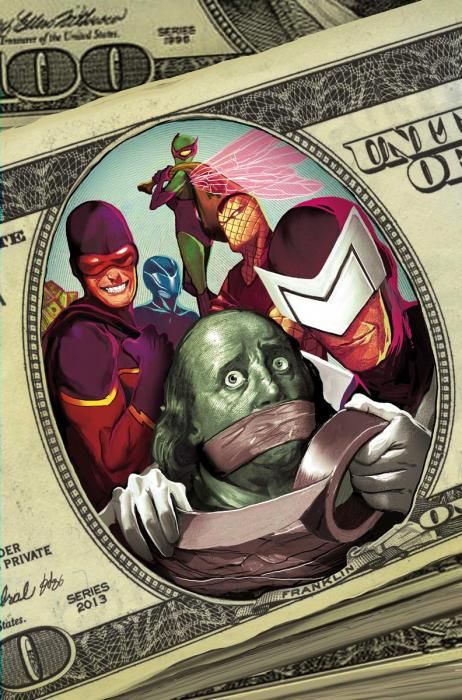"Superior Foes of Spider-Man" by Nick Spencer and Steve Lieber isn't an easy sell. Starring a clutch of low-level villains who call themselves the Sinister Six (even though there are only five of them), the series is nonetheless everything readers could want out of a team book: dense, well-plotted and full of interesting characters. Issue #3 is as good as the series has been so far.
Spencer's take on life as a third-tier super-criminal already had more than a hint of (the original) "Thunderbolts" about it, so seeing him add Abner Jenkins (aka The Beetle, aka former Thunderbolt MACH VII) to the book makes complete sense. He's walked a similar path to Boomerang and his cohorts, and his encouragement towards redemption proves perhaps more tempting than the lead will admit. It's a stroke of genius, especially given that the book's audience is bound to overlap with that of "Thunderbolts."
Of course, it's not like Boomerang is actively looking to go straight. Part of what makes this book work (aside from its fantastic sense of humor) is that it centers on crooks who are comfortable with their role in society -- capable of committing crimes but never think that they're evil. Boomerang in particular is relatable as someone trying to make the best of a bad situation. He's stuck between the law, his small-time crook colleagues and a genuinely competent and dangerous villain, so even when he turns to crime, readers actively want to forgive him.
Steve Lieber's art is the perfect fit for the book. His realistic and grounded visuals suit the tone of Spencer's writing to the ground. Part of the book's point is that being a super-villain is ridiculous, and the way Lieber renders the characters in their costumes really drives that home: suited up, they look impractical and awkward, but only because Lieber can render natural-looking body language beneath the ridiculous shapes and colours. It's endlessly enjoyable.
There are elements of the book that might put people off, but they're the same things that'll make it a book others love. It's heavy on continuity, referencing characters and events from all over Marvel history. The exposition isn't subtle, but the characters' wry commentary means it's fun to read and packs in subtext. The art is spare and low-detail, but it's got great storytelling and dynamics. If the characters aren't familiar, that just gives Spencer and Lieber more room to work their magic.
Overall, it's a charming, matter-of-fact look at life on the fringes of super-powered life, and exactly the kind of book that deserves a bigger audience. For readers that love the tone of "Hawkeye," this is one of the few places to find anything even remotely similar, and that alone makes it worth a try.

